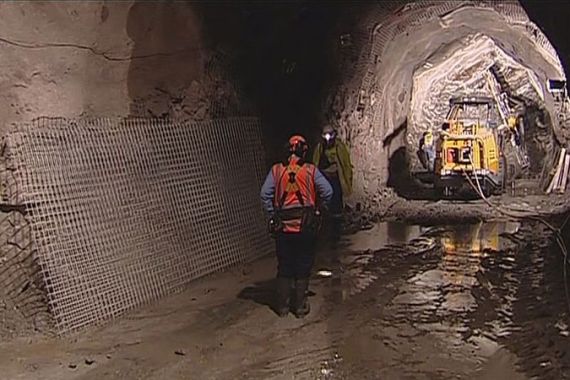Blast fears stall NZ mine rescue
Search for 29 trapped men at Pike River coal mine on South Island is stalled as officials test gas levels.

Fears of a second gas explosion at a New Zealand coal mine have stalled the search for 29 men who were trapped deep underground following a powerful blast a day earlier.
Authorities tested air samples at the Pike River coal mine in Greymouth on Saturday to determine safe levels for rescue crews after failing to establish contact with the men overnight.
Keep reading
list of 4 itemsAfter the Hurricane
World’s coral reefs face global bleaching crisis
Why is Germany maintaining economic ties with China?
Poor weather was also hampering access to the ventilation shafts.
An explosion rocked the remote colliery near Atarau on the west coast of New Zealand’s South Island on Friday.
Video from the scene showed blackened trees and light smoke billowing from the top of the rugged mountain in Greymouth where the mine was.
David Feickert, a mine safety expert, warned that “there could be another explosion”, adding that mine officials had to worry about the presence of methane, unlike the accident last month at a gold and copper mine in Chile where 33 men were rescued alive after being trapped for 69 days.
Feickert said the Pike River mine had two exits, unlike the Chile mine which had only one access shaft that was blocked.
Of the 29 trapped miners, 16 are full time employees and 13 are contractors, aged between 17 to 62. There are British and Australian nationals among them.
‘Risky rescue’
Peter Whittall, the chief executive of Pike River mine, said the air quality tests from the samples taken on Saturday morning “have been inconclusive”.
“We can’t risk sending men into the mine until we know exactly what [the quality of the gas] is,” he said.
 |
Whittall said officials would have enough analysis by late Saturday to decide whether a rescue team can go in, adding that the missing miners would have to deal with such hazards as air pollution, high levels of methane and carbon dioxide, and low levels of oxygen.
He had said earlier that the horizontal mine tunnel would make the rescue effort easier than if the shaft was at a steep angle.
“We’re not a deep-shafted mine so men and rescue teams can get in and out quite effectively, and they’ll be able to explore the mine quite quickly,” Whittall had said.
John Dow, the chairman of Pike River mine, said each miner carried up to 60 minutes of oxygen, enough to reach oxygen stores in the mine that would allow them to survive for “several days”.
The mine is about 2.3 kilometres long, with the trapped men believed to be most of the way inside.
There are a number of ventilation shafts which climb vertically at least 100 metres to the surface to provide fresh air.
The explosion is believed to have occured about 1.5 kilometres along the mine shaft.
Police said the electricity in the mine went out shortly before the blast which may have caused ventilation problems.
Pike River Coal’s office in Wellington said they were still working out what had taken place.
The St John Ambulance service said three rescue helicopters and six ambulances have been despatched to the mine.